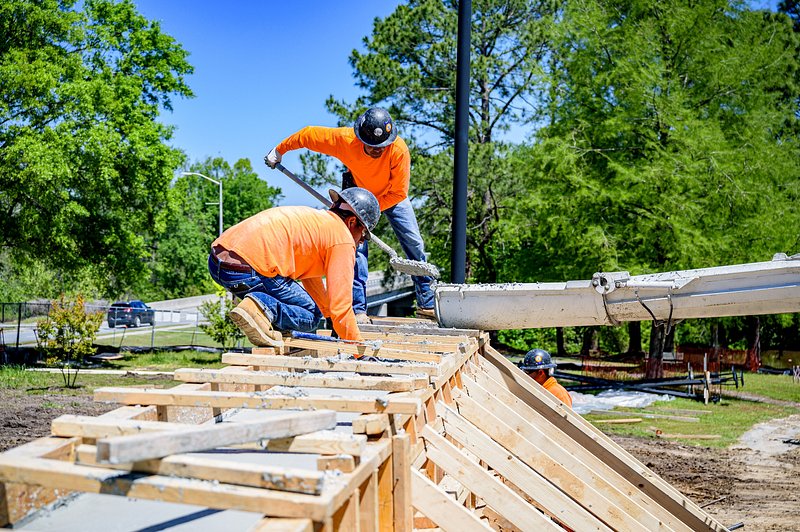Paugh Handyman Service Dallas
Reliable and Trustworthy
Reliable and Trustworthy

January 20, 2025
Remodeling a home can be an exciting and rewarding endeavor, but it also comes with numerous challenges. One of the most critical aspects of a successful remodel is ensuring compliance with local permits and regulations. Failing to secure the necessary permits or adhere to building codes can result in costly fines, legal issues, and delays. This comprehensive guide aims to provide homeowners with a clear understanding of remodeling permits, the importance of compliance, and the steps involved in ensuring that projects are done the right way.

Permits are official approvals issued by local government agencies that ensure a construction project adheres to established building codes, zoning laws, and safety standards. In the context of home remodeling, permits are required for a variety of projects, ranging from structural alterations to electrical and plumbing upgrades. They ensure that the work is done safely and that it will not negatively impact the structural integrity of the property or the surrounding environment.
Compliance with remodeling permits is essential for several reasons:
Several parties are involved in the process of securing and complying with remodeling permits.
Local building departments are typically the primary entities responsible for issuing permits. They review applications, enforce building codes, and conduct inspections to ensure compliance. Homeowners can locate their local building department by visiting municipal websites or calling local government offices.
While homeowners can apply for permits, it is often more efficient to hire licensed contractors who are familiar with the permitting process. A licensed contractor can secure the necessary permits on behalf of the homeowner, saving time and ensuring that all regulations are followed.
In some cases, third-party inspectors may be employed to verify that a project is in compliance with all applicable codes during and after the project. These inspectors provide an additional layer of scrutiny and can help ensure the project meets all requirements before final approval.
Various types of permits may be required depending on the scope of the project.
These are the most common type of permits and are required for structural changes, such as adding rooms, removing walls, or constructing decks. Building permits are essential to ensure that the alterations made to the home meet safety and design standards.
If a remodeling project involves the installation, modification, or repair of electrical systems, an electrical permit will be necessary. This includes installing new outlets, wiring, lighting, or making changes to the home’s electrical infrastructure.
Plumbing permits are needed for projects that involve water lines, sewer connections, or moving plumbing fixtures. These permits help ensure that plumbing systems are installed according to code, which is crucial for preventing water damage and maintaining sanitary conditions.
Mechanical permits are required for changes or installations related to HVAC (heating, ventilation, and air conditioning) systems. These permits cover work such as ductwork, furnace installations, or alterations to the home’s ventilation system.
Depending on the nature of the project, specialty permits may be required:
Building codes are standardized regulations that ensure the safety, health, and energy efficiency of structures. These codes dictate the materials, construction methods, and design elements that must be used to meet safety and environmental standards. Building codes vary depending on the location and the type of project, which means that it’s essential to understand the codes specific to your area.
Local building codes can usually be accessed online through the municipal or county government website. Many cities and counties offer resources for homeowners, such as downloadable code books or searchable online databases. Additionally, homeowners can contact their local building department to request a copy of the relevant codes.
The process of obtaining a remodeling permit typically involves several steps:
The first step in obtaining a permit is understanding the scope of the project. Homeowners must identify the specific permits required based on the work being done. Some projects may require more than one permit, so it’s essential to have a clear plan and a good understanding of what needs to be done.
Homeowners will need to prepare documentation, such as blueprints, project plans, and engineering reports, as part of their permit application. These documents should accurately reflect the proposed changes and demonstrate compliance with building codes.
Applications can often be submitted online, but some jurisdictions may require in-person submissions. Application fees will vary depending on the scope of the project, and homeowners should expect a waiting period for the permit review process.
Once the application is submitted, the local building department will review the plans to ensure they meet all applicable codes and regulations. The department may request modifications or additional documentation before issuing approval.
Once the permit is approved, homeowners will receive official documentation granting permission to begin the work. The permit will specify what the project covers, including any restrictions or requirements for inspections during the process.
Inspections are critical in the remodeling process and are typically required at various stages of the project. For example, inspections may be required for the foundation, framing, electrical work, or plumbing systems. Homeowners should coordinate with the local building department to schedule these inspections at the appropriate times.
Delays can occur if the work is incomplete or doesn’t meet the required standards. Common mistakes include unpermitted work, failing to follow the approved plans, or missing key inspections.
Once all inspections are passed, homeowners will receive final approval from the building department, signaling that the project complies with all regulations and is complete.
Failure to obtain the necessary permits or follow building codes can result in significant consequences:
Unpermitted work can lead to fines, and in some cases, homeowners may need to pay for retroactive permits or bring the work up to code. This can be both time-consuming and expensive.
If the work is deemed unsafe or violates local regulations, it could result in lawsuits, forced demolition, or other legal consequences.
Unpermitted work can impact a home’s resale value. Potential buyers may be discouraged from purchasing a property if they discover that significant work was done without the proper permits, especially if it could affect the safety or structural integrity of the home.
Local regulations can vary widely, even within the same state or county. Homeowners should ensure that they understand the specific rules governing their area and verify requirements for their unique projects.
Delays in the approval process can arise due to incomplete applications, backlogs at the building department, or missing documentation. Homeowners can expedite the process by ensuring that all required materials are submitted accurately and on time.
Working with unlicensed contractors can lead to problems in securing permits. It is essential to verify that contractors are licensed and understand the permit requirements for the project at hand.
Even small projects, such as changing electrical outlets or installing new windows, may require permits. Homeowners should check with their local building department to determine the specific requirements for their project.
Skipping permits may seem like a way to save money upfront, but non-compliance can lead to costly fines, the need for retroactive permits, or even the demolition of unpermitted work.
Even if homeowners hire contractors, permits are still required. Contractors are responsible for obtaining the necessary permits and ensuring compliance with building codes.
A homeowner successfully navigated zoning laws and obtained permits to build an addition to their home. By hiring a licensed contractor and consulting with local authorities, they ensured the project met all required standards, resulting in a smooth and compliant remodeling process.
One homeowner faced legal action after failing to obtain permits for significant structural changes to their property. The unpermitted work was discovered during a property inspection, leading to costly fines, required demolitions, and a significant drop in property value.
Ensuring compliance with remodeling permits and regulations is essential for the success of any home renovation project. By understanding the importance of permits, following the correct application process, and working with licensed professionals, homeowners can avoid legal and financial pitfalls. Remodeling projects can be complex, but with the right knowledge and preparation, navigating the permitting process can be straightforward and stress-free. Ultimately, compliance not only protects the safety and legality of the project but also preserves the value and integrity of the home.